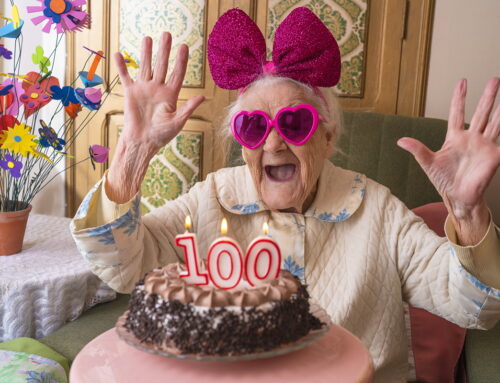Senior living marketing teams face an endless stream of challenges. The sales cycle is years long. COVID-19 shut down in-person events. Competition is stiff and rising. The average cost per lead is higher than comparable industries. And now, you can add the polarization of science and healthcare to the list. I think it’s time to openly discuss how this will impact senior living in the years ahead.
The Cult of Self
Cable TV and the internet have changed American society, our news sources, and the list of individuals we trust to share truth with us. The internet in particular has given every individual the ability to present themself as an authority on topics of their choice. Self-published sites offer opinion masquerading as fact, giving rise to never-ending sources of “experts.” As a result, no matter what you choose to believe about any subject, there are online sources to back you up. And now, we’re seeing how that plays out as we try to recover from the COVID-19 pandemic.
Those who refuse the vaccine fall back on one of several tropes. It’s their body, their choice. They don’t trust the science behind the vaccine’s rapid development. They see getting a shot as losing the right to control their healthcare choices. They’re young and healthy or they’ve already had it, so a vaccine isn’t going to help them. They equate wearing a mask to losing their civil rights. Above all, their response follows a personal perspective that governs their choices, which directly impacts the health of everyone.
How do you speak to this audience? How do you position a healthcare service, like assisted living, skilled nursing, or hospice and palliative care for those who no longer accept traditional figures of authority? And why should we worry about this unvaccinated cohort when they’re not part of senior living’s target audience? Because senior living can’t think only about what is happening now. They need to be planning and thinking about what the future is likely to bring.
The Power of a Single Voice
When you start looking at the data, one fact stands out. Seniors are getting vaccinated. Whether by choice or circumstances, more than 49 million seniors are at least partially vaccinated. That means 90% of those 65 years old and older have had at least one shot according to a recent Kaiser Health News article.
Talking heads attribute this high rate of compliance with elder wisdom. I believe that’s a great sound bite but not the whole story. While it’s true both Boomers and their parents have been down a similar road when the polio vaccines rolled out, they’ve also benefited from seeing the positive effects of controlling measles, polio, and tuberculosis through vaccinations. Perhaps more than any other group, they understand the consequences of an unchecked virus.
They saw the last natural case of smallpox cured in 1977. Boomers watched the rise of vaccine controversy with parents and scientists like Andrew Wakefield pushing the theory that the MMR vaccine causes autism. We all heard Jenny McCarthy, a vocal and articulate critic of vaccines, as she appeared at congressional hearings and in personal interviews. A small movement that began in 1969 has grown over the past five decades. Individuals with no expertise in science or research but who are willing to proselytize based on personal observation are more persuasive than actual scientists today.
But they’re also talking about personal vaccinations with their healthcare professionals to prevent pneumonia, shingles, and the flu every year or so. Seniors just might have a clearer view about the power of a shot to help them live a healthier and longer life. Roughly 25% of the US population isn’t getting vaccinated. That’s a significant audience senior living must address in the future.
Alone, Together
COVID-19 won’t be the last global threat we face in our lifetime. We’re more global, more interconnected, and more mobile than at any time in human history. What began in a single Chinese city covered the entire world in a matter of a few months. The result was the rise of individualism overshadowing the concept of the greater good. In the face of the “me-above-all-others” approach to life, how do we live in harmony in a community?
Me versus Us
Senior living communities need to be planning for the next wave of senior demands. It’s clear that high-speed WiFi is now a must-have and not a luxury amenity. But while you’re considering open floor plans that reflect 21st century housing trends, you need to also be thinking about self-governance issues and healthcare policies that accommodate communal and individual needs. How will you handle a single person or a small group of residents who insist they won’t be silent about their political choices? What can you do to ensure they stay in their suite when required to do so in order to control a virus? Think that’s far fetched? Think again.
Today’s flight attendants report unruly and disruptive passengers at a rate that’s double that of two years ago. In the first six months of 2021, more than 85% of flight attendants have had to deal with a disruptive passenger on a flight. One in five of them reported a physical incident. As of July, 3,751 incidents have been reported by the airlines. While alcohol plays a role in some of these incidents, more than three-fourths involved passengers refusing to wear a mask. That’s just one example of the increasing “me, not you” approach to social living the pandemic has encouraged.
Us versus Them
The cult of the individual is rising and defying accepted social standards. There are dozens more. The pandemic has taught me it’s easy for social norms to be stripped away in the defense of “my rights.” How recasting public discourse as attacks on our “freedoms” puts logic and science on the defensive.
To overly simplify where we are, it’s a lot like dealing with angry teens. We’ve all been there with a kid who chooses actions at odds with the rules. Their inability to focus on the consequences of their actions means parents end up shouting ultimatums and as their teens slam the doors. Now imagine what it will be like when your senior living residents challenge social norms in favor of disruptive personal choices.
I believe this is something we all need to consider as a possible future. Now isn’t the time to be an ostrich. We can’t assume we can control our communities because our residents share the same life views, opinions, and preferences. We know diversity is essential to keeping our systems healthy and flourishing. As you plan for the future, including faster Wi-Fi, open floor plans, and telehealth, I hope you’ll plan for a generational shift in acceptable behavior.
I don’t have any answers, just more questions. And I hope you do too. I’d love to continue this conversation with you over a Zoom call or perhaps at a socially distanced meeting. If you have other questions about how to reach and plan for changes in senior living marketing, please reach out to me. I believe Sabal Group can help you weather the upcoming shift in senior living marketing .






